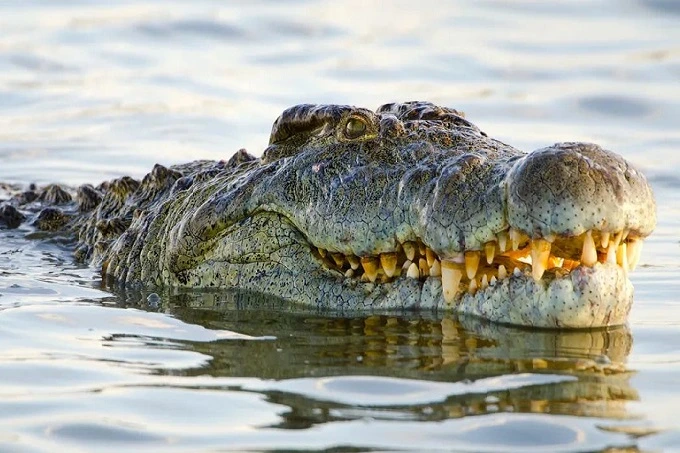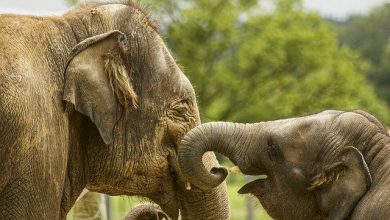Is Gustave, the man-eater crocodile still alive?

The giant six-meter Lolong crocodile, which terrorized the Filipinos, was once caught and lived for some time before its natural death in an eco-park in Bunawan, not far from the places where he once hunted cannibals. But Gustave, his “colleague” from Central Africa, has not yet had a chance to go on a well-deserved rest – according to rumors, he continues to frighten the locals with the very fact of his existence, playing a dangerous game with crocodile hunters – who is whose prey.
The scene is the state of Burundi, the Ruzizi River, which flows into the huge African Lake Tanganyika, which, even without Gustave, is famous for its crocodiles. But this representative of the world of reptiles strikes the imagination of even Burundians who are familiar with the local fauna – over the decades of his predatory activity, Gustave managed to gain a reputation as an almost mythical creature. They recognized the crocodile by its size: it was much larger than its counterparts.
It is believed that Gustave’s conscience is three hundred people, but one must be fair: perhaps he was not the only one who allowed himself to attack two-legged game, despite the abundance of fish and small animals in the river.
True, the researchers admit that the giant prefers people as an object of hunting: the fact is that the very size of Gustave excludes the possibility of hunting small game, but large and “slow” animals like hippos, buffaloes and, alas, people are the kind of prey that the crocodile can handle.
It is difficult to measure and weigh an uncaptured crocodile, so estimates of the dimensions of this African monster are only approximate: it probably exceeds 6 meters in length, and approaches a ton in weight. Such large Nile crocodiles are not commonly found; crocodiles of Asia and Australia hold the palm in size. In the Guinness Book of Records, an indicator of 7 meters 10 centimeters is entered – this is the largest confirmed length of a crocodile.
Gustave can be distinguished from other brothers not only by his impressive size but also by the scars – there are at least three of them on the crocodile’s body: on the head, on the right side and on the back. Probably, these are traces of meetings with hunters, soldiers and travelers.

Gustave’s age, judging by the perfectly preserved set of teeth, is over sixty, which is not youth for a crocodile, but also not decrepitude: representatives of this species can easily live to be a hundred years old.
The case against Gustav: the failed takeover
Why the name Gustave? This name was given to the crocodile by African explorer Patrice Faye, a Frenchman by birth. It was he who, for a long period, tracked down the famous crocodile, collected information from the locals, and studied his habits himself.
It is fair that Faye himself gave the name to his object of observation. However, the Frenchman did not stop at just one study. In 2004, it was decided to start an operation to capture a cannibal crocodile, especially since by that time, there was evidence that Gustav hunted people not so much for food but out of “sports” interest.
Unfortunately, the possibilities of the catchers were limited – a serious military conflict was brewing in Burundi and Faye was allowed to stay for no more than two months; during this period, it was required to catch Gustave.
A huge cage was built, inside which they installed an infrared camera and several baits of various types (people were not listed among them). Throughout the operation, Gustave appeared next to the cage, and walked around, but did not go inside. Additional traps were set – to no avail: other Nile crocodiles came across, but not Gustave. How can one not believe in the supernatural abilities of “Master Ruzizi”?

The researchers, confident that the reptile was just teasing them, were forced to leave Burundi with nothing. And in the mid-2000s, rumors appeared about the death of Gustave. True, the National Geographic Channel expedition, which visited these places in 2008, denied information about the death of a giant crocodile after its participants discovered it.
Landed on the bottom?
Crocodiles go without food for several months, so they can afford to carefully choose their prey. Perhaps decades of unsettled life had taught Gustave to be more careful when hunting and be content with what was necessary, despite his formidable reputation in the African world.
Interestingly, he also earned respect among hippos: usually not avoiding crocodiles and living with them in a neutral neighborhood, when Gustave approached, these animals preferred to move away to a safe distance.
The last time the crocodile Gustave was seen was in 2016 in his usual habitat. According to some accounts, he went downstream, “moving” to quieter places or migrating due to flooding. In 2019, the news came again that Gustave had died, but there was no confirmation of this information, there are no photos either. So, it is quite possible that somewhere in Africa, thousands of kilometers from those places where animals of his kind were revered as gods, Gustave continues his terrifying activity even now.




